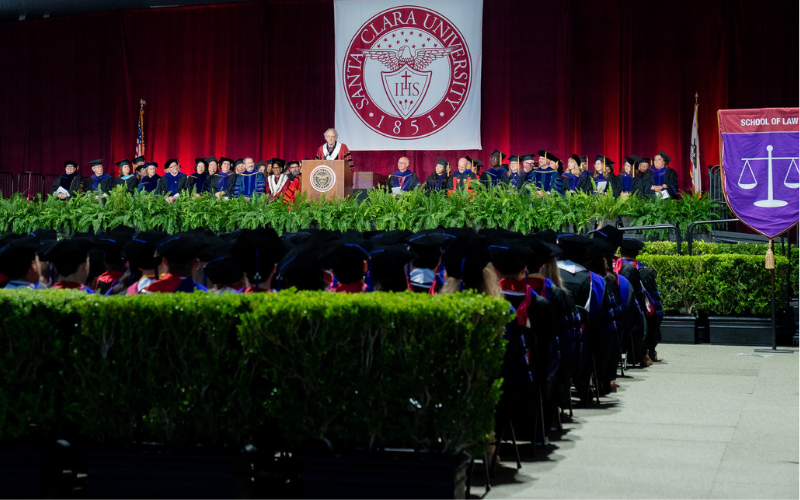
A degree from Santa Clara Law empowers you to lead in top law firms, drive global justice, and make a lasting impact. With rigorous academics and a focus on collaborative innovation, we equip you to shape the future of law and create meaningful change.

Gain hands-on experience through our renowned centers, clinics, and programs, refining your skills in real life settings. Join a supportive community and seize opportunities to lead, advocate, and make an impact.

At Santa Clara Law, we turn theory into practice. With experiential learning in the curriculum and strong support for internships, externships, and community initiatives, we provide the tools and mentorship to prepare you for a successful legal career.

Santa Clara University School of Law prepares lawyers to lead with excellence, integrity, and justice. Located in Silicon Valley, it offers a rigorous program with certificates in high tech, international, privacy, and public interest law, plus graduate degrees. Renowned for its expert faculty and top-ranked intellectual property programs, Santa Clara Law equips students to drive innovation and advocate justice.

Santa Clara Law celebrated the Class of 2025 with a ceremony honoring 219 graduates across J.D., LL.M., and J.D./MBA programs. Held at the Leavey Center, keynote speaker Howard Charney (MBA ’73, J.D. ’77) encouraged students to pursue bold, diverse paths. Graduates earned specialized legal certificates, with messages from leadership emphasizing justice, compassion, and impact.

Santa Clara Law’s Tech Edge J.D. program continues to set the standard in legal education, with 100% of its 2024 graduates securing employment within 10 months—far exceeding national averages and clearly highlighting the value of its innovative, tech-focused curriculum that blends legal training with real-world skills and dedicated mentorship.

The Celebration of Achievement & Inclusive Excellence was a prestigious event that brought together the Santa Clara Law community to honor the outstanding contributions of individuals and organizations who made a lasting impact both in the legal field and broader society through their work, leadership, and dedication to fostering a more inclusive and equitable world.